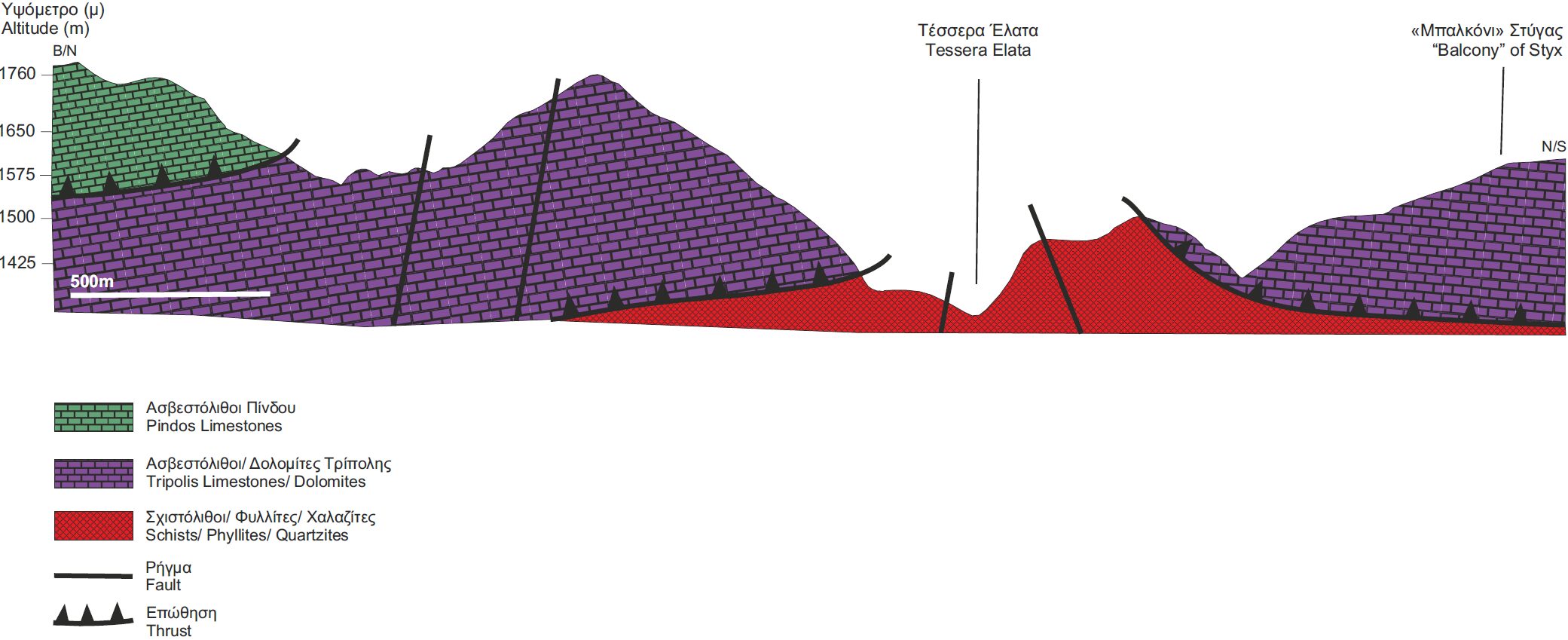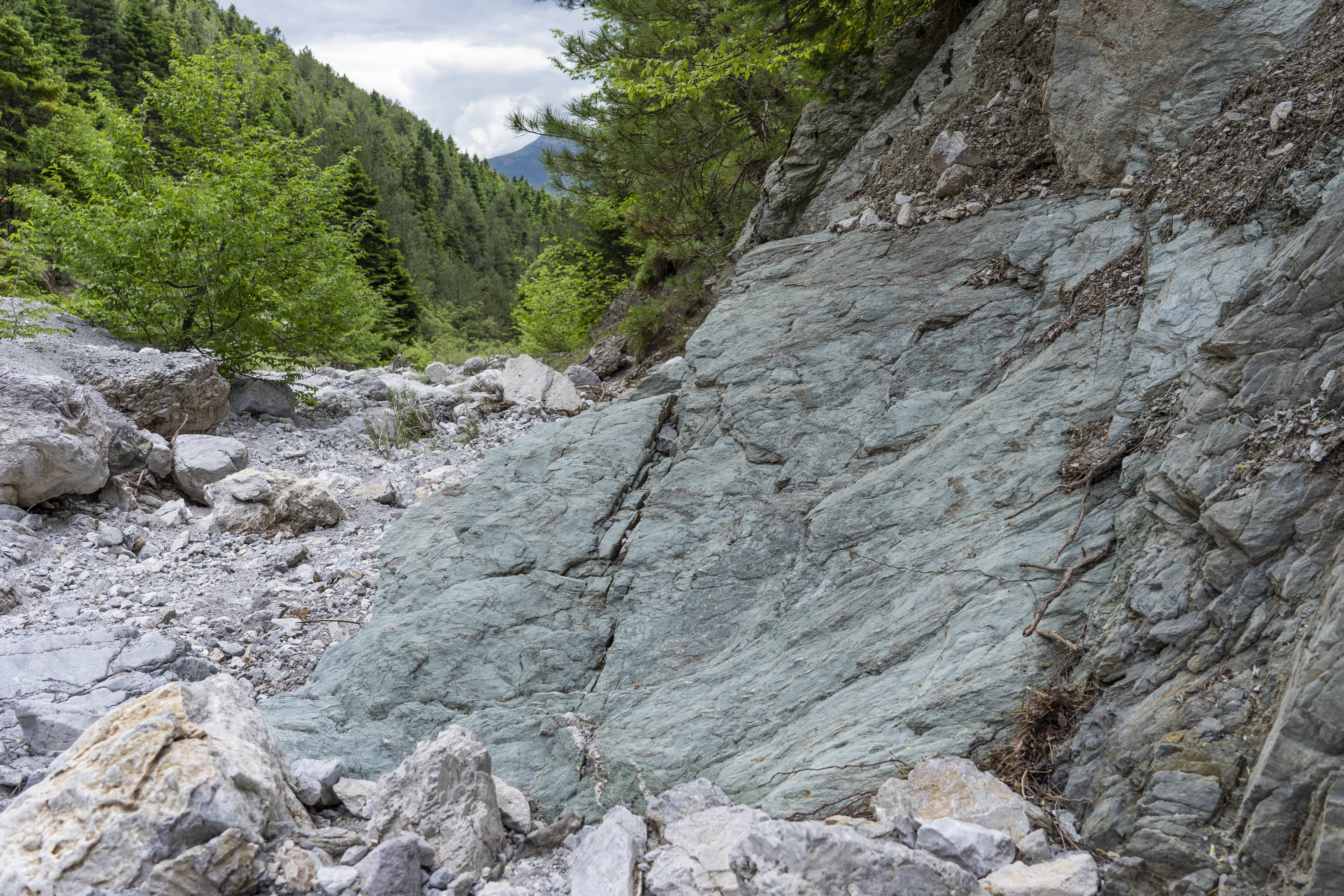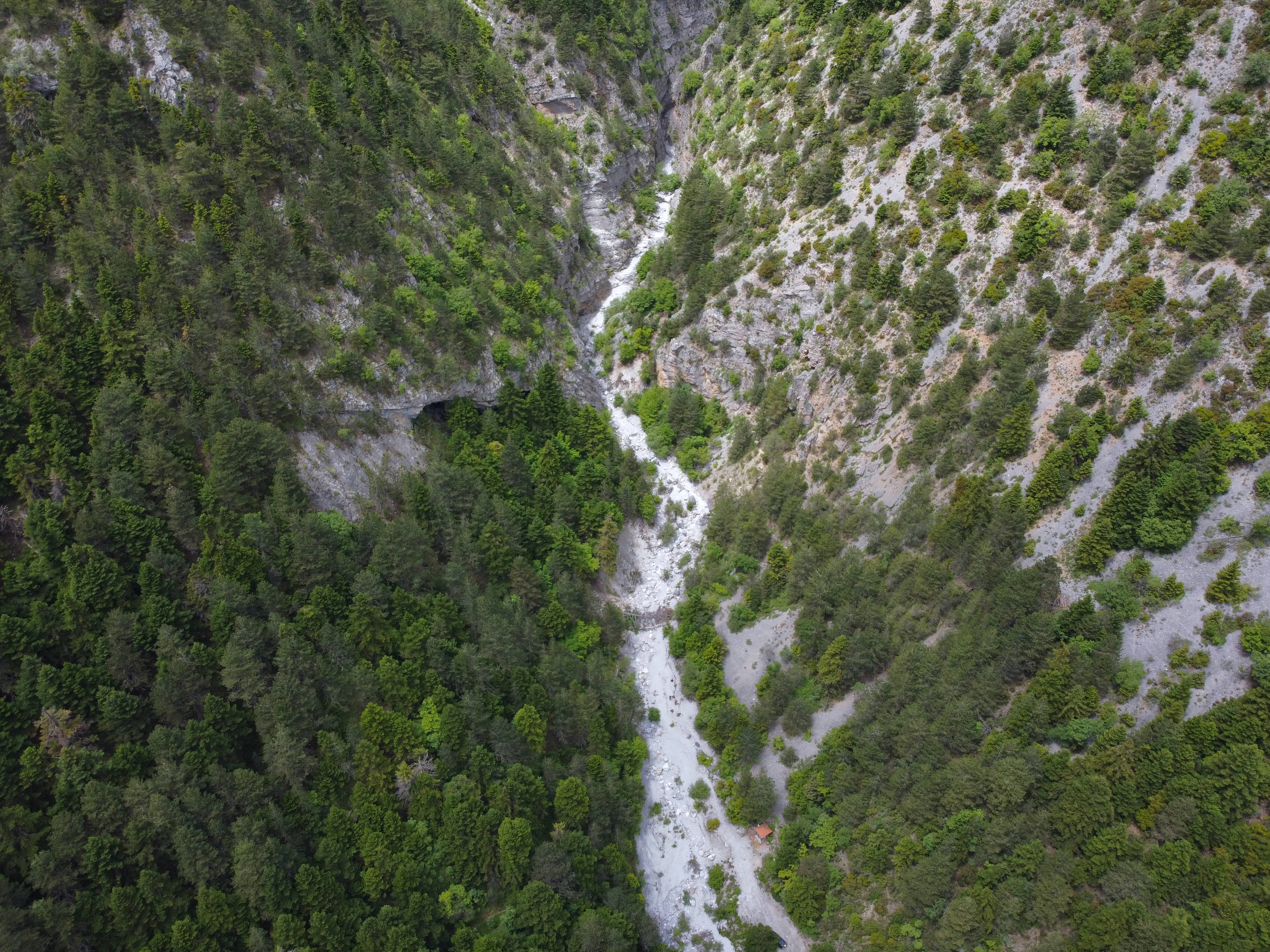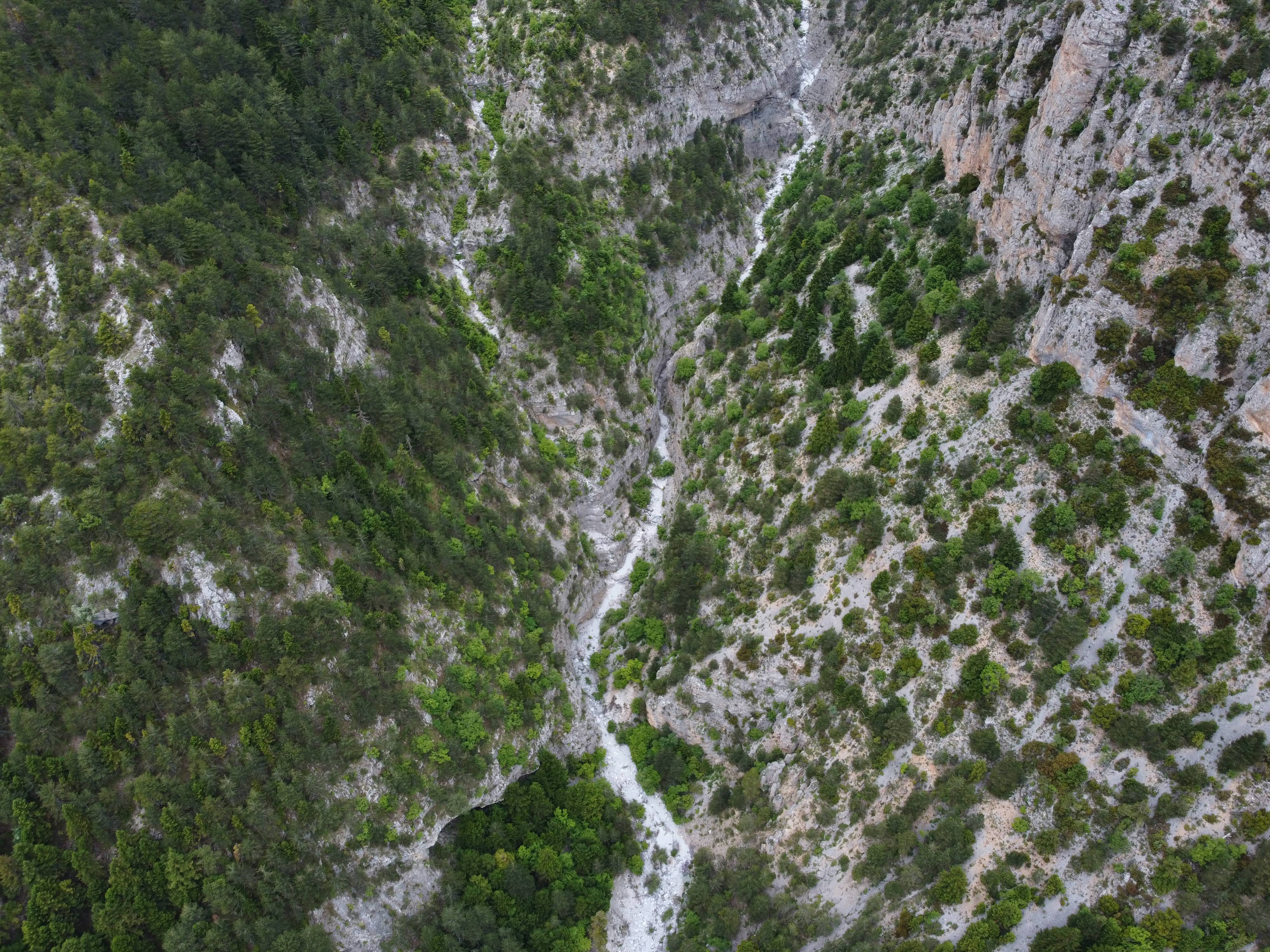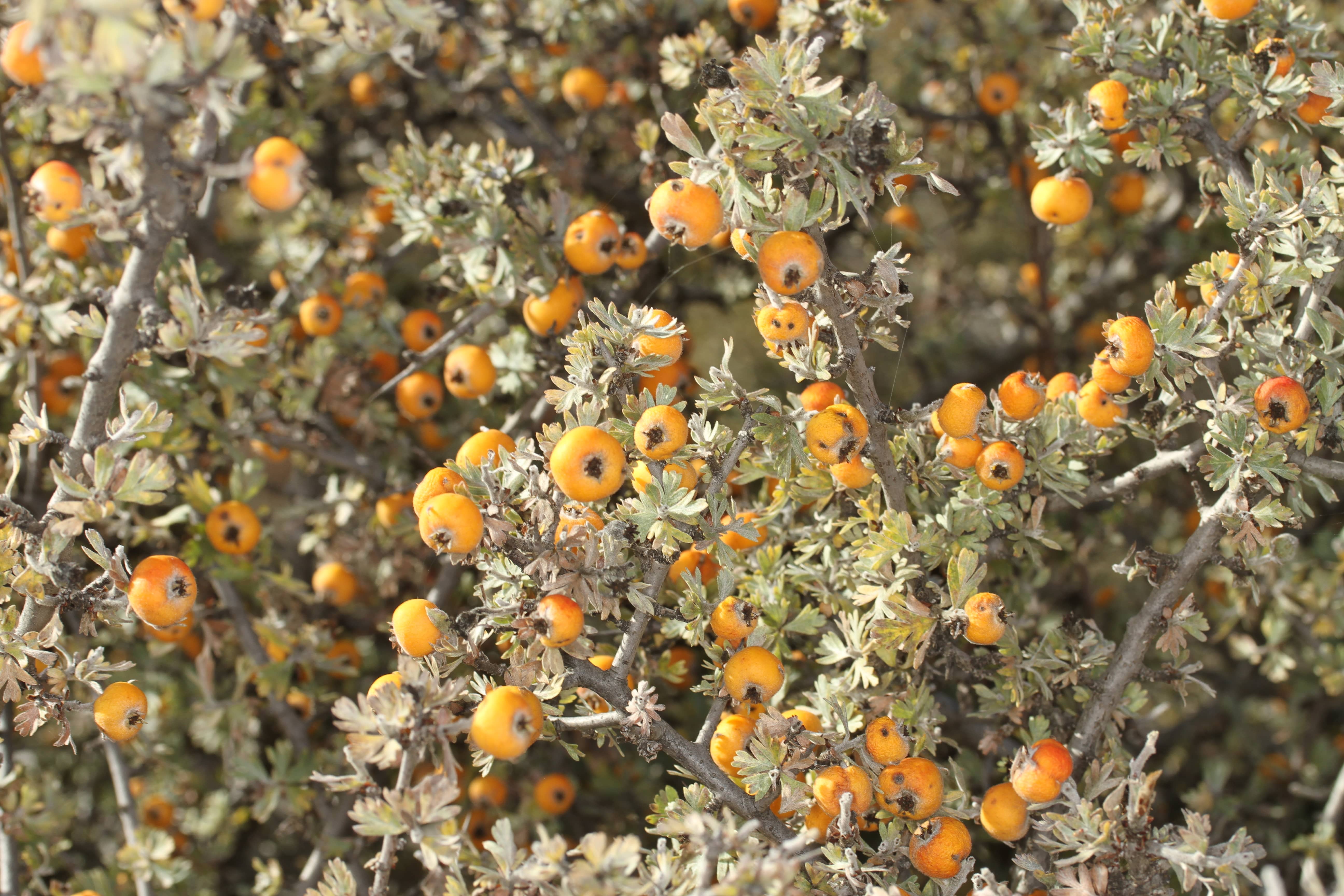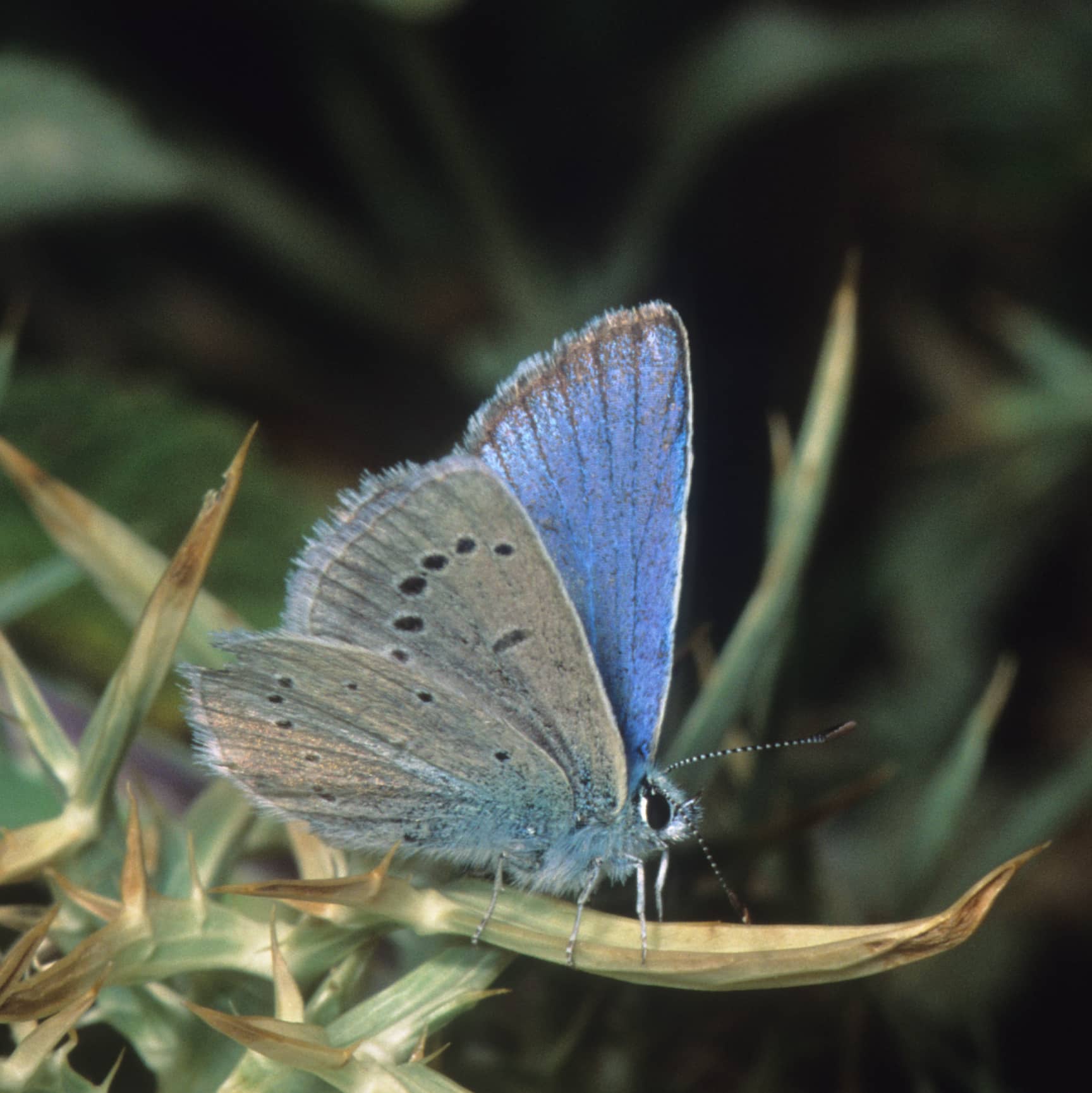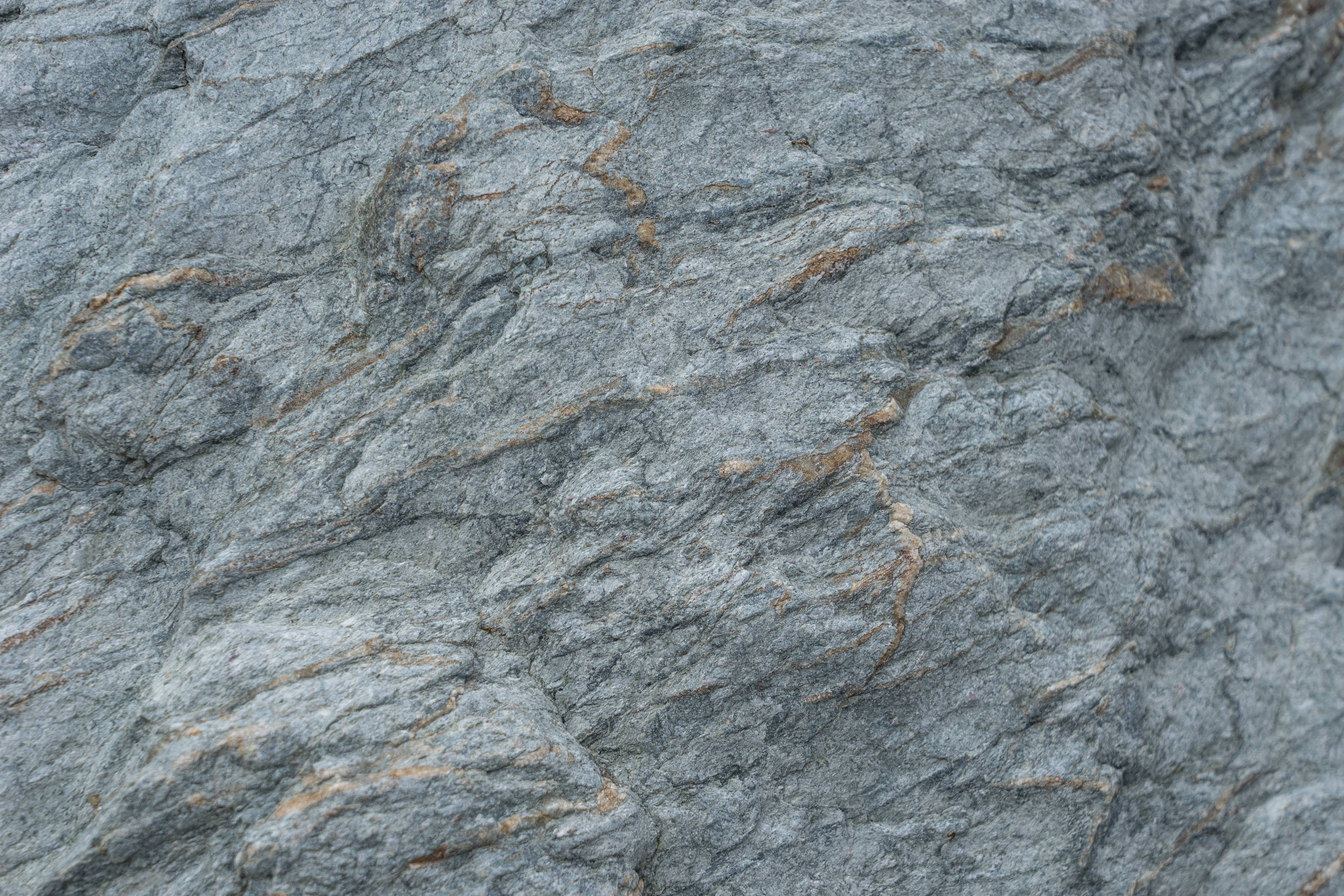FIRS AND ROCKS
The geosite Tessera Elata (Four Firs) is situated at 1315m altitude, in a steep and densely forested gorge, called Likocharadra (which means “the gorge of wolves”). The highest parts of the gorge are built upon dolomites and limestones. The lower parts of the gorge are made of volcaniclastic rocks (Tripolis geotectonic zone). Between these two groups of rocks, there is a big fault (thrust) along which the two rock blocks are moving.
Geodiversity
East of the shallow marine area where the Tripolis rocks were deposited, there was another deeper marine basin. It called Pindos ocean and on its floor limestones were deposited. Intense compression due to the subduction of the African plate under the Eurasian one, resulted in the movement of the Pindos sediments on top of Tripolis sediments along a thrust. Once more, compression resulted in the squeezing and uplifting of the rocks for more than 1800m.
At the southern slopes of the gorge there are scattered conglomerate boulders of glacial origin. They witness past eras, when Chelmos Mt was covered by glaciers even at this distant part of the mountain.
Biodiversity
The Geosite is located within the Protected Area “OROS CHELMOS KAI YDATA STYGOS” (GR2320002) of the Natura 2000 network. The area is covered by Kefalonian fir creating a mixed forest with black pines hosting a rich flora. Going up to the path towards Ydata Stygos, as well as in the wider area we meet a large number of Greek endemic plant species, such as Crataegus pycnoloba (Peloponnesian endemic) and other Greek endemic taxa, such as Achillea umbellata, Centaurea affinis subsp., etc.
Significant invertebrates are recorded in the area with restricted distribution such as the Lepidoptera Turanana taygetica (Critically Endangered), Polyommatus iphigenia (Endangered), Neolysandra coelestina, Lycaena thetis and Lycaena ottomana, as well as the Orthoptera Oropodisma chelmosi (Endangered) and Parnassiana chelmos (Endangered).

